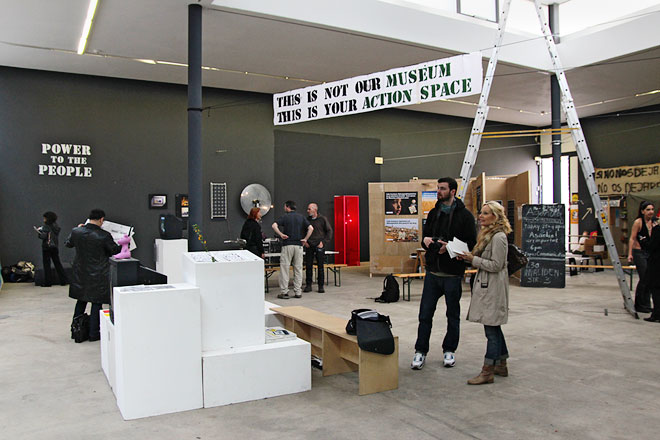in his new text for e-flux journal on the 9th berlin biennial, ahmet ogut criticises the ‘tactical mistakes’ of the biennial’s 7th edition from 2012. one of those mistakes, according to ahmet, was to limit the involvement of occupy movement only to exhibition spaces:
‘An institution is made up not only of exhibition space. The occupation should’ve been extended to the office space, where the decisions were made. Still, we can view this as a productive failure that enables a step forward rather than back.’
its hard to disagree with ahmet’s claims, but in fact the biennial’s occupation WAS extended to KW’s office space, where the assemblies were held with KW’s ordinary workers and decision makers. the shortcomings of this process were rather in the fact that the changes which were negotiated and introduced at these assemblies were swiftly rolled back by KW management immediately after the biennial ended.
that said, it seems that ahmet’s diagnosis that 'since Żmijewski’s edition, the dominant factor in decision-making around the Berlin Biennale has been a “fear of failure.” ’ is strikingly accurate.
